 |
|||||||||||||||
Presented here is a compilation of all the books that I am currently aware of with regard to the X-15. It is exciting to see all the works associated with this rocket plane over a period spanning more than 60 years at this point. |
Along with an image of the cover, and basic information about each book, such as the author(s), publication date, and link, I have also included some commentary about each book below the description. The commentary is provided in cyan. |
|||
 |
 |
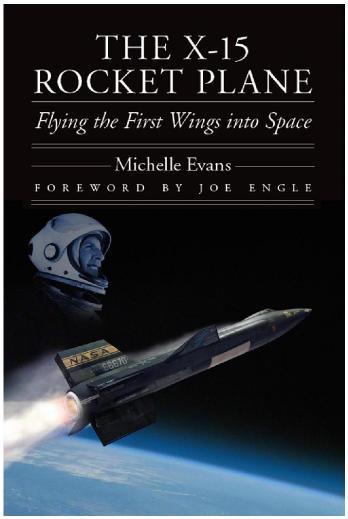 |
||||
Variations on a book cover for "The X-15 Rocket Plane, Flying the First Wings into Space" by Michelle Evans (2013). Artwork by Thommy Erikkson. At left is the final version that appears on the published work, but two alternatives that were considered are also shown. The Moon was added in order to infer the connection between the X-15 and further space exploration (and tie it to X-15 pilot Neil Armstrong as the first man on the Moon). On the right, a ghostly image of Joe Walker was added in order to impress readers with the personal nature of the work versus being a technical book. Thoughts on the various designs are always welcome. Which cover would you have prefered? Drop me an email anytime at mach25@sbcglobal.net. |
||
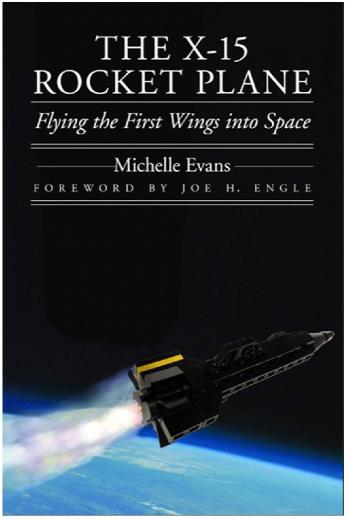 |
 |
|||
Fellow Outward Odyssey author David Hitt is also a Lego fan. He did me a great honor in re-creating the cover of my book using a homemade Lego X-15. He also shared his collection of rockets, all created using Legos. What an amazing collection! David's books are "Homesteading Space: The Skylab Story" and "Bold They Rise: The Space Shuttle Early Years, 1972-1986." |
||
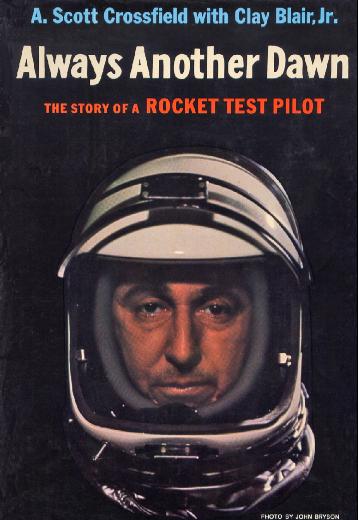 |
 |
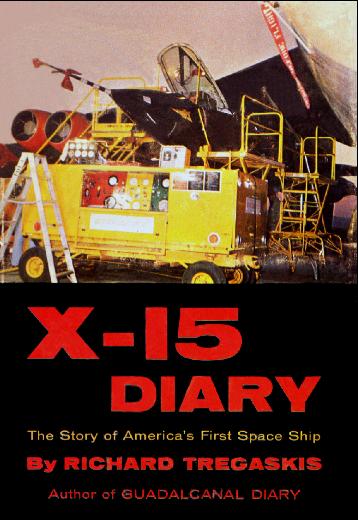 |
||||
"Always Another Dawn, The Story of A Rocket Test Pilot" by A. Scott Crossfield and Clay Blair, Jr. (1960). |
"Rocketship X-15, A Bold New Step in Aviation" by Myron B. Gubitz (1960). |
"X-15 Diary, The Story of America's First Space Ship" by Richard Tregaskis (1961). |
||||
This is a great first-person portrait of the first X-15 pilot. Scotty shares his life in great detail, and it is a wonderful read. Highly recommended, and still available. |
Gubitz gives the reader a, sometimes minute-by-minute, account leading up to and through the first flight in the program. An excellent, detailed view by a good writer. |
This book is still in print. It is published currently by the University of Nebraska Press, the same house that publishes my own X-15 book. |
||||
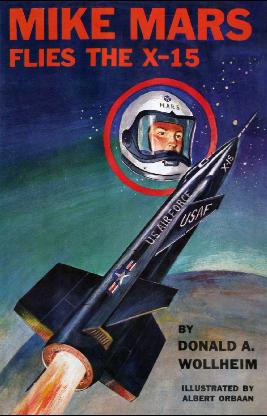 |
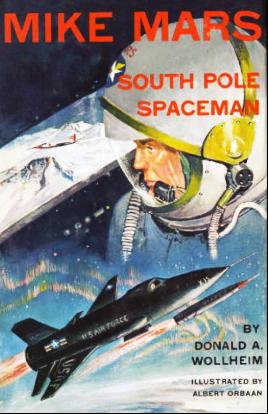 |
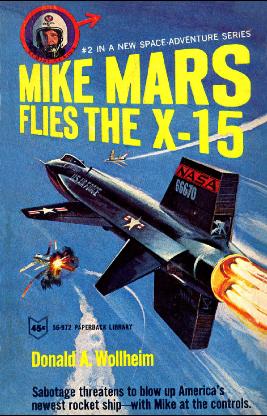 |
 |
|||||
Hardcover artwork for "Mike Mars Flies the X-15" (1961) and "Mike Mars, South Pole Spaceman" by Donald A. Wollheim, with illustrations by Albert Orbaan (1962). |
Paperback artwork for the two Mike Mars book associated with the X-15 (1966). There are a total of eight books in the Mike Mars series. |
|||
The Mike Mars books were for young adult readers. The two X-15 books were no. 2 and no. 6 in the series respectively. Mike's given name was Michael Alfred Robert Samson, whose initials spelled "MARS." His best friend was Johnny Bluehawk. The series starts with Project Mercury and ends with Mike flying to the Moon. |
I took a copy of the book "Mike Mars, South Pole Spaceman" with me on my trip to Antarctica in January 2023. It was a special part of my presentation that I was able to give while in the Antarctic, aboard the World Traveller, on 14 January 2023. |
|||
 |
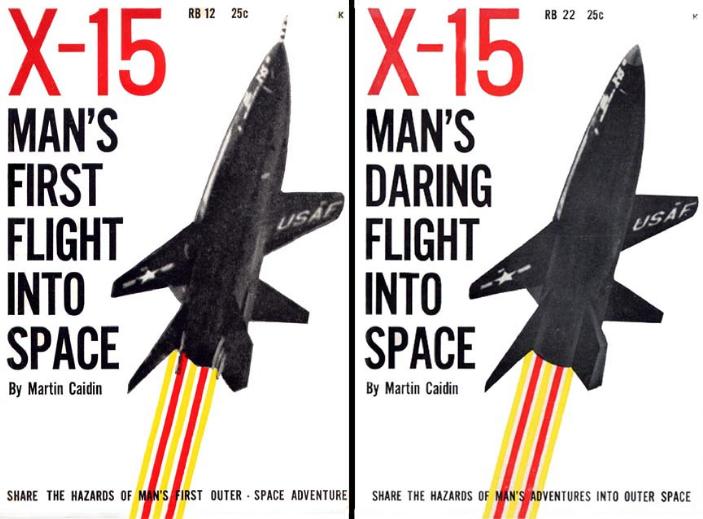 |
|||
"Ninety Seconds To Space, The Story of the X-15" by Jules Bergman (1960). |
"X-15, Man's First Flight into Space" by Martin Caidin (1959). Later reissued and renamed "X-15, Man's Daring Flight into Space." (1961) |
|||
Bergman was not the best writer, but he was competent in describing technical subjects. The cover is probably one of the most lackluster of the early X-15 books. |
Caidin wrote the earliest book on the X-15, as well as one of the smallest, at just 64 pages. Caidin was a prolific writer of non-fiction and science fiction. He was later famous for writing the novel "Cyborg" which was turned into the television movie and later series, "The Six Million Dollar Man." He also wrote two versions of "Marooned" (Mercury and then Apollo), the latter of which was made into a movie starring Gregory Peck. |
|||
 |
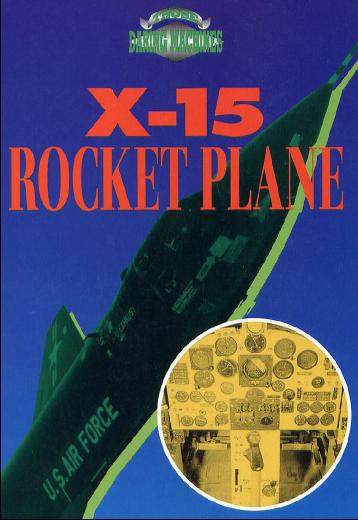 |
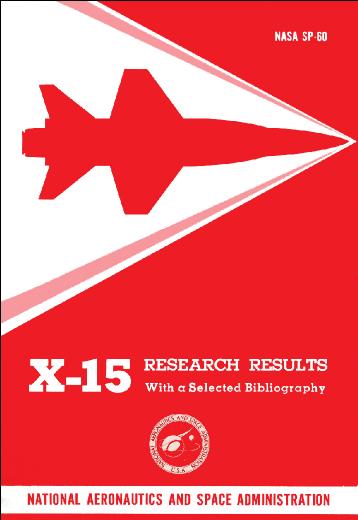 |
||||
|
by Chesley Bonestell (1961). |
by Wilma S. Ross (1994). |
"X-15 Research Results, With A Selected Bibliography" by Wendell H. Stillwell (1965). |
||||
This is primarily a book of fantastic illustrations by the famous space artist Chesley Bonestell. His imaginative trip to the Moon uses a vehicle that looks like the X-15. |
A later book on the program that was written for young readers. It gives very basic information about the program and the pilots. |
As the title suggests, this is a technical work, and was written by an engineer on the X-15. For many years, it was the only book that covered the X-15 after 1961. However, it is only the first half of the program |
||||
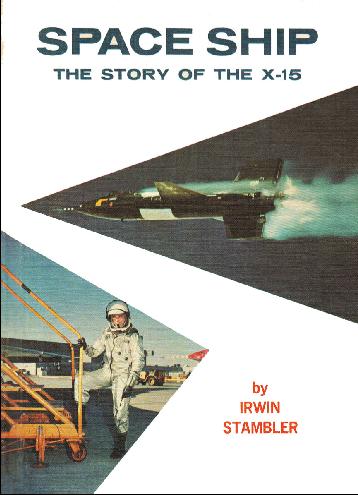 |
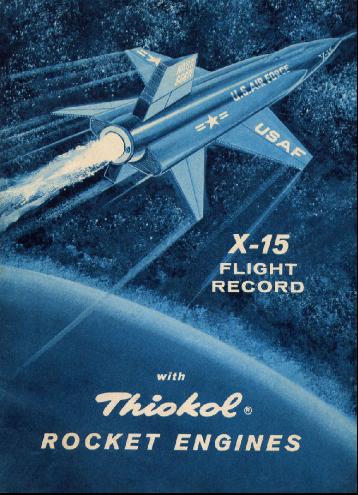 |
 |
||||
"Space Ship, The Story of the X-15" by Irwin Stambler (1961). |
"X-15 Flight Record With Thiokol Rocket Engines" (1961). |
|||||
If you were a young kid and wrote to NASA for information about the X-15, this is what you were sent. Even though very short, at just 35 pages, it is a nice record of the early research program. |
||||||
Another early work on the X-15, it covers the time from Scott Crossfield through the first flights of Walker and White. A larger format book without a lot of substance. |
A very short history of the X-15 is presented, then a record of the flights, with room for additional flights to be written in by hand when they took place. |
|||||
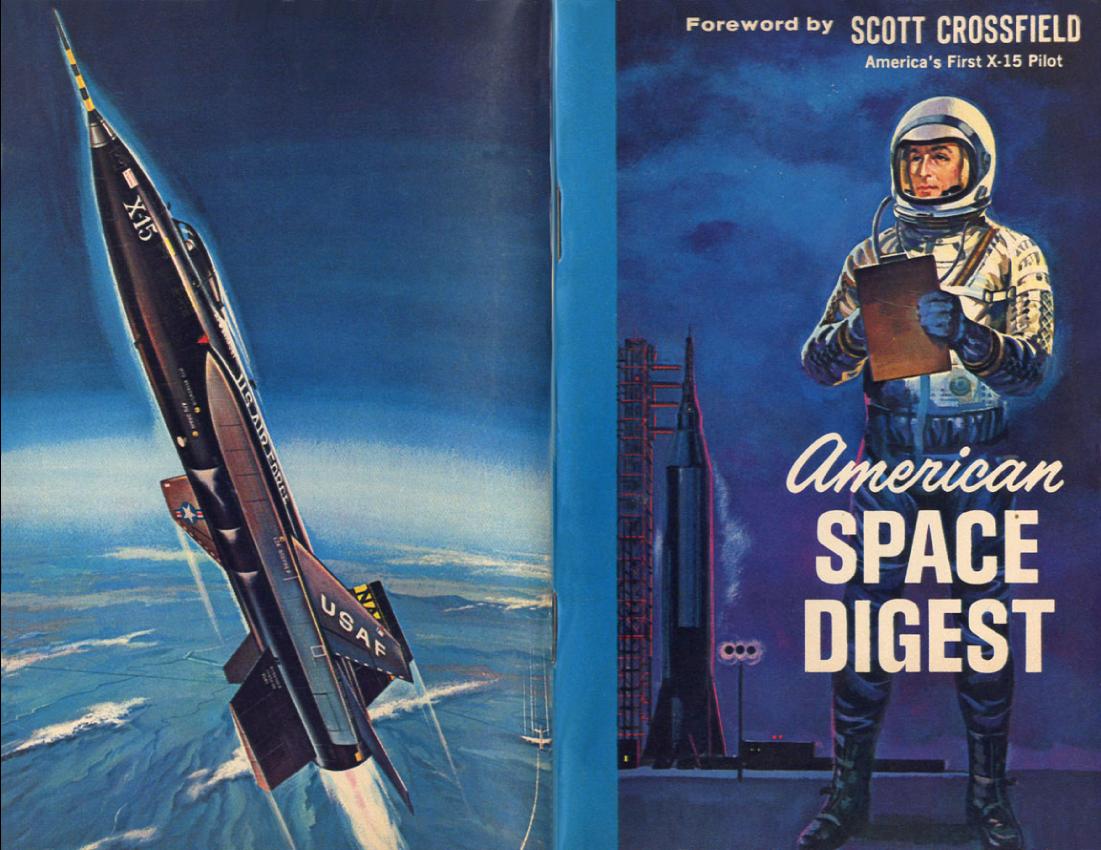 |
||
"American Space Digest" (1963). This was a special booklet given away as a promotion with Schick Razors. |
||
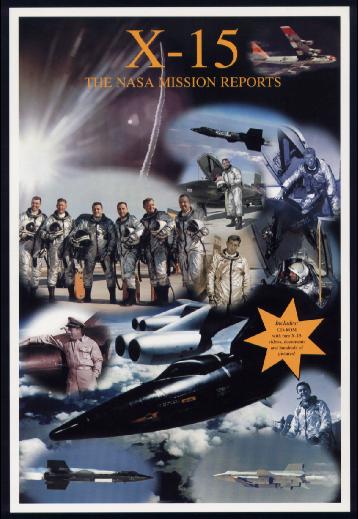 |
 |
|||||||
 |
||||||||
|
by Ben Guenther, Jay Miller, and Terry Panopalis (1986). |
||||||||
"Joseph's Road, An Unfinished Biography" by Carolena Lapierre (2006). |
||||||||
An early compilation of X-15 data and photographs. The flight log is not presented well, and suffers from incomplete data, but the photo archives are excellent. |
||||||||
"X-15, The NASA Mission Reports" edited by Robert Godwin (2000). |
||||||||
Probably the most unusual entry in X-15 literature, this is a biography of Joseph Lapierre, written by one of his four wives as a way to pass on his legacy to his 21 children! During his stint on the X-15, he served as the crew chief, flight planner, and engineer on the no. 3 aircraft |
||||||||
Apogee Books is famous for compiling and publishing long lost data from various programs from the early days of the X-15 and Mercury, through Apollo and the Space Shuttle. The only non-vintage information in their X-15 book was an early version of my X-15 flight log. |
||||||||
 |
 |
|||
"Hypersonic, The Story of the North American X-15" by Dennis R. Jenkins and Tony R. Landis (2003). |
compiled by Tony R. Landis and Dennis R. Jenkins (2003). |
|||
"Hypersonic" is probably considered the technically-oriented benchmark on the X-15. And the companion photo scrapbook is excellent for many unseen images from the program that they couldn't fit into the original book. Landis worked for several years at Edwards, and thus had access to achives that were not available to many other X-plane researchers. |
||
 |
 |
||||||||
"First Man, The Life of Neil A. Armstrong" by James R. Hansen (2005). |
|||||||||
An excellent book, and certainly the best yet written on the life of X-15 pilot Neil Armstrong. Unfortunately the movie did not match the greatness of the book. |
|||||||||
Young Belle finds a great book to read. |
|||||||||
The Belle figure was produced by Hallmark, and the detailed book cover, which is only about half-an-inch high, was created by Robert Kline. |
|||||||||
 |
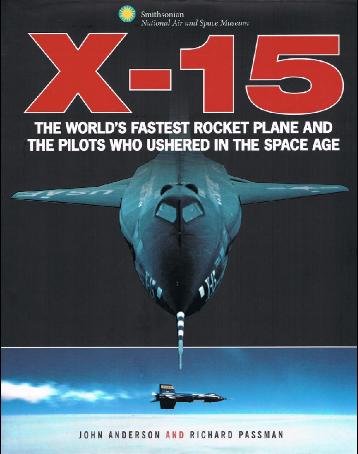 |
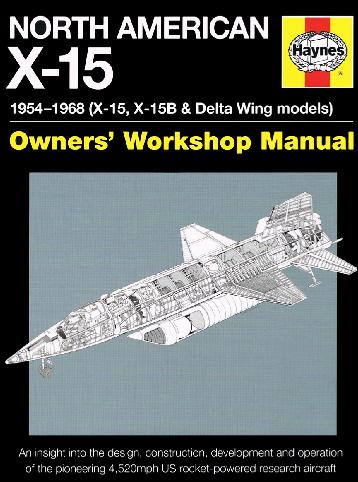 |
||||||||
"X-15, The World's Fastest Rocket Plane and the Pilots Who Ushered in the Space Age" by John Anderson and Richard Passman (2014). |
||||||||||
"X Planes 3, North American X-15" by Peter E. Davies (2017). |
"North American X-15, 1954-1968" by David Baker (2016). |
|||||||||
This book, published by the Smithsonian, literally has errors on every page, starting in the first paragraph! Even many photo captions are wrong. A pilot and the program manager have misspelled names! I think it was rushed into production, as it was announced almost immediately after UNP announced the publication date for my book. Out of all X-15 books, I would not recommend this title. |
||||||||||
A relatively short work, but it has some truly excellent cgi images, such as seen on the cover. These were created by Adam Tooby. The book is worth it just for his artwork. |
Unfortunately is is not, as the subtitle states, an owner's workshop manual. Instead, it gives a decent overview of the program, with lots of technical details, and a good selection of photos. |
|||||||||
 |
 |
|||
"Higher and Faster, Memoir of a Pioneering Air Force Test Pilot" by Robert M. White and Jack L. Summers (2010) |
||||
"At the Edge of Space, The X-15 Flight Program" by Milton O. Thompson. (1992). |
||||
The only two books written by X-15 pilots after the program ended (Crossfield wrote "Always Another Dawn" before he completed his time on the X-15). Thompson's book was interesting in that it didn't even mention where he was born. White's book was self-published, which was a shame that it didn't get better treatment and wider circulation. He mentioned that he was working on this when I interviewd him at his Florida home in 2006. Sad that it was not published until after he passed away. |
||
 |
 |
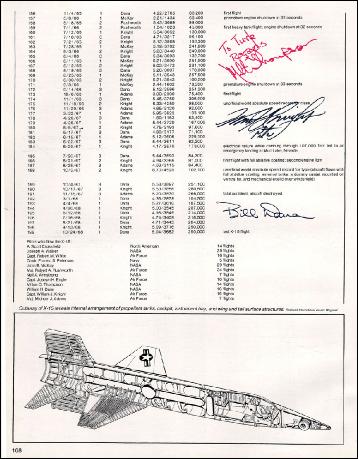 |
||||
3 pages from "The X-Planes, X-1 to X-29" by Jay Miller (1983) This book is what instigated the beginning of research for my own book on the X-15. I carried it with me to every interview over nearly three decades, and had each person I interviewed sign their autographs. The above pages show the autographs of each of the nine pilots I interviewed, as well as family members from the other three pilots, who passed away before I started my research.
Each pilot or family member signed the flight listing near the point of their first flight, whereas others signed elsewhere in the X-15 section (see below) X-15 pilots who signed these pages include: Scott Crossfield, Robert White, Robert Rushworth, Forrest Petersen, Neil Armstrong, Joe Engle, Milt Thompson, Pete Knight, and Bill Dana. Familiy members from Joe Walker, Jack McKay, and Mike Adams also signed these pages.
* * * * * Below is a second set of pages from the book, which are filled with signatures from many of the flight planners, mechanics, engineers, and managers I interviewed. One example is on the left hand page, in the right margin, where Paul F. Bikle signed. Mr. Bikle was the program manager on the X-15 after Walt Williams left to take over the Mercury program at Cape Canaveral. Walt's signature can be seen between the right-hand photos in the middle image below.
* * * * * For a complete list of everyone I interviewed during the course of my research, and thus who has signed this book, click here. |
||
 |
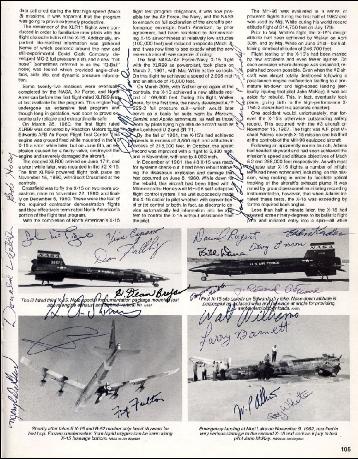 |
 |
||||